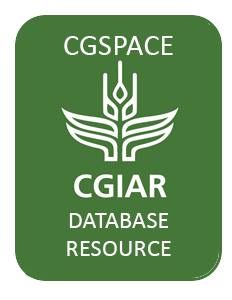Mission
To reduce hunger and poverty, and improve human nutrition in the tropics through research aimed at increasing the eco-efficiency of agriculture.
People
CIAT’s staff includes about 200 scientists. Supported by a wide array of donors, the Center collaborates with hundreds of partners to conduct high-quality research and translate the results into development impact. A Board of Trustees provides oversight of CIAT’s research and financial management.
Values
- Shared organizational ethic
- We respect each other, our partners, and the people who benefit from our work. We act with honesty, integrity, transparency, and environmental responsibility in all of our joint endeavors.
- Learning through partnerships
- We work efficiently and pragmatically together and with partners. Considering our diversity to be a key asset, we adapt readily to change and strive to improve our performance through continuous learning.
- Innovation for impact
- We develop innovative solutions to important challenges in tropical agriculture, resulting in major benefits for the people who support, participate in, and profit from our work.
Members:
Resources
Displaying 851 - 855 of 958Manejo de la sabana nativa en los Llanos Orientales de Colombia y Venezuela [conjunto audiotutorial]
Identification and analysis of agroproduction zones by the overlay-correlation method: the case of Costa Rica
Estrategias de trabajo sobre frijol para la sierra
Nitrogen and phosphorus requirements for the growth and nodulation of Cajanus cajan in Panamanian soils
Chemical analysis and missing element trials with Sorghum vulgare L. showed that three Panamanian soils, representative of three great soil groups, were deficient in both nitrogen (N) and phosphorus (P). When a greenhouse trial was undertaken to test the response of Cajanus cajan to rhizobial inoculation, N and P fertilization in these soils, no response was obtained in either the Río Hato or Los Santos soils. There was a definite response to P and a slight response to inoculation in the Pacora soil, which had the poorest fertility level. N applications depressed nodulation.
The mechanisms of recognition between legume roots and rhizobia: Some implications for biological nitrogen fixation in the tropics
This paper reviews the experimental basis for the lectin-recognition hypothesis and considers ways in which the host/Rhizobium interaction might be manipulated to enhance the benefits of symbiotic nitrogen fixation in the tropics.


